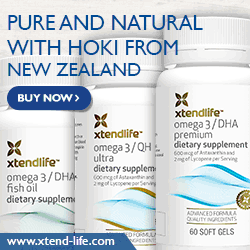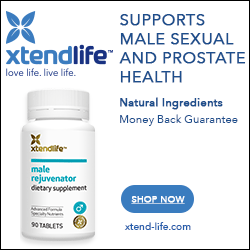I Love the Smell of Plagiarism in the Morning!
Update (1/13/10): I have been assured by someone close to the company that the documents in question will be removed from public view.
I was doing some digging today on maqui – the latest and greatest “superfruit,” doncha know. Lots of people are searching for info, so Paul tagged me to write a review. As an aside, I should have it done in another day or so.
But that’s not the point of this post… it’s just the background.
In the course of my research, I naturally scanned various sales sites. Basically, I determined that the marketing is “Acai 2.0″… except companies are claiming that maqui is “better” than acai because it has a higher ORAC score.
As Kurt Vonnegut used to say, “so it goes.” Problem is, the whole notion of “high ORAC = good/higher ORAC = better” is far too simplistic. As I wrote back in 2008, “ORAC values are not yet tied to clinical outcomes.” I was pretty sure that this was still true, but decided to consult “The Great Gazoogle” to be sure before I put it in my review.
To begin, I Googled “ORAC and clinical outcomes” – which, unsurprisingly, pulled my own 2008 post on ORAC up. But it also pulled up another page link, just above the one to my post, with the same “ORAC values are not yet tied to clinical outcomes…” phrase highlighted. Curious to see my precise wording mirrored on a different web site, I clicked the link to “ORAC, a Controversial Value.” The resulting doc turned out to be a pdf emblazoned with the logo of an MLM (multi-level marketing) company: “eXfuze.”
And there was a LOT more than just one phrase from my post in that doc!
Grrrr…
Here are a few examples of the content duped from my ORAC post:
Me:
To begin with, ORAC stands for “Oxygen Radical Absorbance Capacity.” It’s a “test tube” (in-vitro) analysis that was developed by the USDA, and is a standard assay for measuring the antioxidant capacity of a food source. The ORAC test uses a fluorescent probe that can be damaged by free radicals. The change in fluorescence intensity is a measure of the amount of the damage. The effectiveness of an antioxidant is reflected by the protection it offers against that change. The results are compared to a standard – usually “Trolox” (a form of water soluble vitamin E) and expressed in terms of “Trolox equivalents.”
eXfuze doc:
ORAC stands for “Oxygen Radical Absorbance Capacity.” It’s a “test tube” (in-vitro) chemical analysis that was developed by the USDA. The ORAC test has become a standard assay for measuring the antioxidant capacity of a given food source. The ORAC test uses a fluorescent probe that can be damaged by free radicals. The change in fluoresence intensity is a measure of the amount of the damage. The effectiveness of an antioxidant is reflected by the protection it offers against that change. The results are compared to a standard usually “Trolox” (a form of water soluble vitamin E known with the name of Trolox) and expressed in terms of “Trolox equivalents.”
There are a few little changes, here and there, but the “borrowing” is unmistakable.
Me:
There are, needless to state, other types of free radicals, and it’s entirely possible for an antioxidant that is extremely effective against non-peroxyl radicals to have a low ORAC score. Carotenoids are an excellent example. Carotenoids such as beta-carotene are highly effective at quenching singlet oxygen radicals, yet perform poorly against peroxyl radicals. Alpha-lipoic acid is another excellent antioxidant that has a low ORAC value.
eXfuze doc:
Another important point to consider is the fact that it is entirely possible for an antioxidant that is extremely effective against non-peroxyl radicals to have a low ORAC score. An example of this is carotenoids, natural substances responsible for the color in foods. Carotenoids such as beta-carotene are highly effective at quenching singlet oxygen radicals, yet perform poorly against peroxyl free radicals. Alpha lipoic acid is another excellent example of an antioxidant that has a low ORAC value and yet in our human body performs as a great antioxidant.
Me:
A high ORAC score can be misleading, as antioxidants with lower scores may still have health effects specific to particular organs or tissues. For example, the carotenoids lutein and zeaxanthin are useful for preventing age-related macular degeneration (AMD), yet spinach, which is an excellent source of these compounds, has an ORAC value of “only” 1515 (100g, raw), whereas an equivalent amount of raw blueberries come in at 6552. Thus, when it comes to maintaining health/preventing disease, the highest scoring foods aren’t necessarily the best ones.
eXfuze doc:
A high ORAC score can be a misleading value, as antioxidants with lower scores may still have health effects specific to particular organs or tissues. For example, the carotenoids lutein and zeaxanthin are useful for preventing age-related macular degeneration (AMD), yet spinach, which is an excellent source of these compounds, has an ORAC value of “only” 1515 (100g, raw), whereas an equivalent amount of raw blueberries come in at 6552. Thus, when it comes to maintaining health and preventing disease, the highest scoring foods aren’t necessarily the best ones.
There’s more… but I shan’t bore you with ALL the side-by-side comparisons. I think y’all get the point.
We’re talking serious FAIL, here, folks. I don’t know who at the company is responsible for this, but I’d like to find out!
But in the meantime… who am I to hold a grudge… especially when eXfuze is in the “opportunity” business? And whaddya know: I sense a real opportunity here! After all, eXfuze markets supplement drinks… and I write supplement reviews.
It’s a match made in heaven, people! Stay tuned… 😀




January 11, 2011
I Love the Smell of Plagiarism in the Morning! – http://blog.ultimatefatburner.com/2011/0…
January 12, 2011
This just shows your work is legendary. People know of your vast knowledge, and steal it. The problem is they get to take the credit. I have never liked any type of MLM company. This just reinforces my thinking.
I will be waiting with great anticipation to read your reviews on the products.
January 12, 2011
LOL – I dunno about the “legendary” part, but I’m sure it was quite convenient. After all, it’s a biiiiig internet… so I’m sure that the person who appropriated my post figured I’d never find out. Which isn’t a bad assumption, either… According to the document properties, that PDF was produced on 10/9/2009, so it’s over a year old. I didn’t go looking for it, either – that I found it at all was really sort of a fluke. It’s not like I have the time to be constantly Googling keywords and phrases from my posts and reviews to see if they’ve “wandered,” after all.
I agree with you about MLM: I’ve yet to find a good company, particularly when it comes to health/fitness products. The products of the “best” ones could perhaps be described as “average” or “not terrible” (USANA is an example) but all too many of them are blatant rip-offs (*cough* Mannatech *cough*).
And a business model that encourages its sales force to mine their personal relationships for money is one that I instinctively distrust. Personally, I dislike being hustled by my neighbors, acquaintances, co-workers, cousins, etc., and would even if the products they were selling were dyn-o-mite. The fact that so many of ’em are substandard makes it even more vivid.
On a related note: I’ve always gotten a laugh out of the random MLMers that appear on the forums: the moment they figure out that they can’t spam us, they disappear faster than moth pee on a 100 watt bulb – so much for truly being interested in fitness, lol.
But – hey – reviewing supps is what I do… so of course I intend to be fair. Business is business after all… and – tempting though it is – it wouldn’t be appropriate to use a review as a form of retaliation, per se. But since the company has been brought to my attention, I might as well avail myself of the opportunity to scrutinize the products that my work was appropriated to support. After all, the whole “superfruit” thing has been on my radar screen for over 2 years (which is why the ORAC post was written in the first place). Thus, it’s right up my alley.
January 13, 2011
I know that any review you did on their products would be honest and straight forward, as always.
Moth’s can pee on a lite bulb?